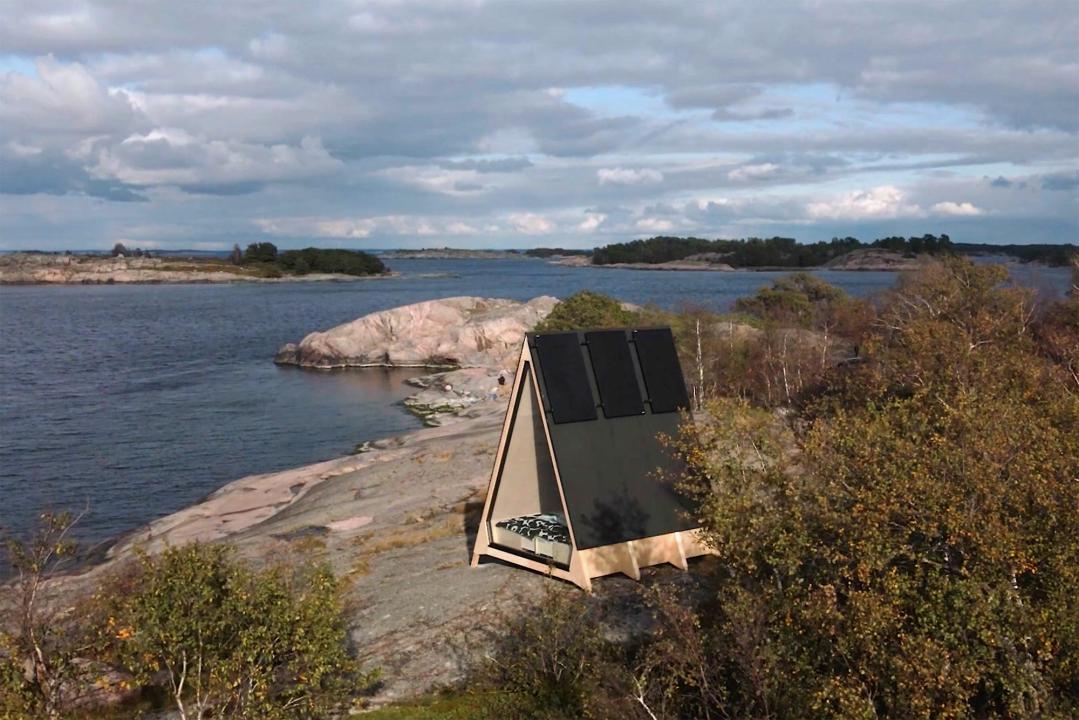
The sustainable lifestyles specialist Otso Sillanaukee does not actually like to use the word ‘waste’, as it creates an image of something worthless and useless.
“We should instead see waste as material to be recycled and used again. Cutting down on waste and repurposing are important parts of sustainable living”, Sillanaukee says.
He listed five favourite zero waste innovations from Helsinki.

Nolla Cabins – Spending a carbon-neutral night
Nolla Cabins emerged from an idea of designer Robin Falck’s in 2018. He developed a tent-like sleeping hut measuring 10 square metres, with a minimal carbon footprint.
The cabin has a gable roof and a light structure. It can be assembled and disassembled by hand on the spot, and can be set up without a separate foundation structure. As such, it does not compromise the nature of the erection site. All waste from Nolla glamping trips are recycled, and the carbon emissions linked with the use of the cabin are overcompensated.
Nolla Cabin proves that the carbon footprint of recreational construction efforts and travel can be diminished significantly, offering sweeter dreams with a lighter conscience.
nollacabins.com
Lovia – Luxury handbags from surplus pieces
Lovia makes handbags out of leather and fabric derived from surplus bits and pieces from furniture manufacturers, and the fish skin that is a side product of the food industry.
The bags are designed according to the material at hand, and the end products certainly do not give the impression they are made of recycled and surplus materials. Lovia transforms the waste pieces into stylish and durable goods. The company operates in a transparent manner, following principles of sustainability in all their actions.
loviacollection.com

Plan B – Creative combinations of waste materials
Plan B is a line of recycled products that includes clothing, interior decoration items, and re-upholstered furniture. All products are manufactured at the waste material workshops of the Helsinki metropolitan area’s Reuse Centres. The fun and light-hearted end results show how recycled materials can be intelligently combined and reused instead of simply being discarded. The products are sold at the Reuse Centre in Espoo’s Nihtisilta, and the Reuse Centre’s online shop. Read more about Plan B’s design products here.
Durat - Recycled plastic for surfaces
Durat is the maker and name of the versatile material of recycled plastic that has been produced since the 1990s. It can be used, for instance, for kitchen worktops, washbasins and sinks, bath tubs, and various other surfaces. Durat has managed to create a durable and stylish material fit for many purposes and that also cuts down on plastic waste. Following a circular economy logic, the company also buys back and recycles its old products.
durat.fi

Niimaar – Stylish recycling helpers
The Finnish company Niimaar makes containers for recycling waste. Household cupboards tend to have too little space for each recycling category, so solutions that help out sorting and recycling come in handy.
Niimaar’s products are made of wood and recycled materials, and they look so good that they don’t need to be stashed away out of sight. Waste recycling makes one think just how much our own choices impact the amount of waste we produce.
niimaar.com
